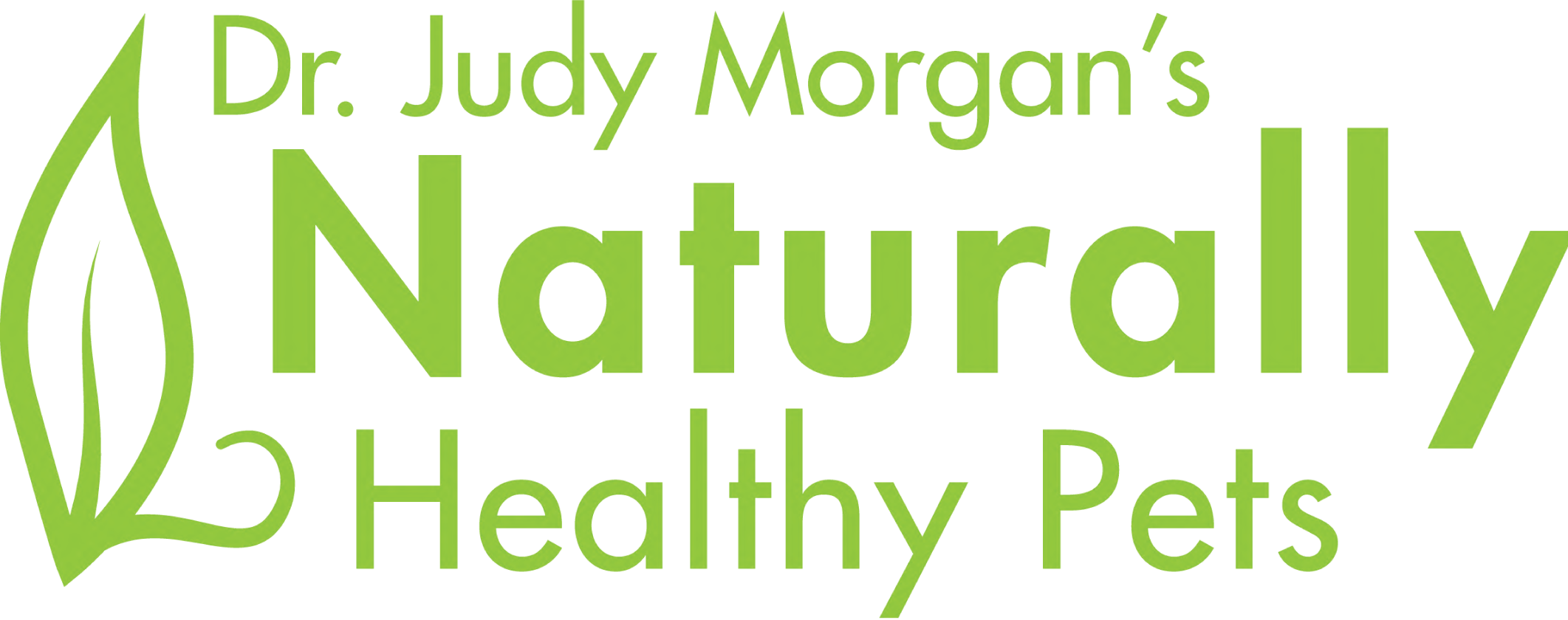The quality and safety of food people consume has always been a concern. Massive recalls of human food occur with regularity. Even though no system of mass production is completely safe, discriminating grocery shoppers read labels and make the best choices within their budget for the humans in the household. But are people just as discriminating when it comes to reading pet food labels? Part of the challenge is learning how to interpret the information on a pet food label. Armed with the proper information, pet parents can make better choices for the furry members of the family.
What are the components of a pet food label?
The Food & Drug Administration (FDA) is the federal regulatory body responsible for pet food labels. Federal law requires the following information on pet food labels:
- Brand and Product Name - The descriptors in the food name help to explain the percentage of a particular ingredient in the food. For example, there are different rules for “Chicken Dog Food,” “Chicken Recipe Dog Food,” and “Chicken Flavor Dog Food.”
- The type of processing the product undergoes during manufacture (dry, moist/canned, freeze-dried, raw, etc.) is also listed.
- Name of the animal species the product is for (i.e. DOGS or CATS)
- A “net quantity” statement lists the net weight or volume of the food. Both English (pound/ounce) and metric units (kilograms/grams) must be used.
- The Manufacturer’s Name and Address names the producing company as the guarantor of the food. A distributor’s contact information may also be included if applicable.
- List of Ingredients Used –The ingredients list on a pet food label displays everything that goes into the food. Manufacturers aren’t required to list measurements or percentages as they do with the guaranteed analysis, but they are required to list the ingredients in order of weight, from most to least.
In addition to Federal regulations, certain states have additional labeling requirements including:
- The Guaranteed Analysis is a breakdown of the nutritional components of the food, shown in percentages. This label shows how much protein, fat and fiber is in the food to prove claims on the packaging. The word “crude” refers to the analysis method and not the quality of the food.
- Nutritional Adequacy Statements indicate whether the food is intended for specific life stages or health purposes. It can also indicate whether the food is intended for intermittent or supplemental feeding.
- Feeding Instructions are required for food labeled “complete and balanced” for any or all life stages. Feeding frequency must also be stated.
- Calorie Statements are expressed as kilocalories per kilogram of food as fed and kilocalories per familiar unit (i.e. per can, cup, etc).
Besides federal and state requirements for pet food labeling, the pet food companies may add additional labeling. For example, a pet food using “beef” as their primary protein may add a graphic of a piece of steak on the front of the bag. Such pictures can be very misleading and are a marketing ploy used to entice customers into purchasing their food.
What information is provided in the Guaranteed Analysis?
The guaranteed analysis is a listing of the macronutrients in the pet’s food. It is important to know how to interpret the guaranteed analysis and understand how it relates to high-quality nutrition.
- Protein is an essential ingredient in pet food; protein from whole meat sources is easiest to digest and provides the most nutrition to a pet in the form of amino acids. No matter how many vitamins you add to the diet, it is difficult to achieve the same amino acid and vitamin bioavailability that a carnivore needs without feeding meat.
- Dietary fats aid in the absorption of the fat-soluble vitamins A, D, E and K. Fat also provides a physical environment in the gut that enhances absorption of fat-soluble vitamins as well as essential fatty acids such as Omega-3.
- Moisture is needed for food to be digested. Moisture from the food is transported from the cells of the body into the digestive tract. Foods low in moisture can cause stress to the organs, particularly the kidneys. Raw and canned foods contain a moisture content like wild prey (65-70%). Dry kibble generally contains only 6-10% moisture; pets eating dry diets generally remain in a state of low-grade dehydration.
- Carbohydrates are often not listed in a guaranteed analysis but it is important to know the amount of carbohydrates in your pet’s food. To determine the amount of carbohydrates in a particular pet food, use this equation:
100% - (% crude protein + % fat + % crude fiber) = % carbohydrates
Carbohydrates are added to provide a pet with vitamins, minerals, and fiber that they cannot receive from meat, fruits, or vegetables. High carbohydrate diets are not recommended. The percentage of carbohydrates should be lower than protein and fat.
What are good versus questionable or toxic ingredients?
An ingredient list can read like an encyclopedia of long, scientific words. These are ingredients that are highly processed and lab-created and should be avoided as much as possible. If you must look up the definition of an ingredient, chances are it is not the best choice for pet food.
For meat/protein: If the ingredients label does not fully describe the type of meat or protein, contact the manufacturer, and inquire about the sourcing. If they are not transparent about their sourcing, move on to another company. This information helps you to “read between the lines” of the label. For example, an ingredient listed as “chicken” could be flesh and skin, or with bone, or even a whole carcass with or without feathers. Keep a look-out for the following terms:
- The word “meal” after a listed meat indicates a highly processed protein source. Meal products are a high source of protein; however, they are produced using cheap, low-quality ingredients. Those low-quality ingredients are often rendered (processed) from animals who are dead, dying, debilitated or diseased.
- The term “by-product” is another way to describe the lowest quality animal protein.
- Animal Digest is a rendered un-named source of poor-quality protein and flavor, most likely from animals that have undergone chemical, acid, or enzymatic hydrolysis.
For dietary fats: Healthy fats are necessary for good nutrition, and various oils are added to commercial dog food to provide essential fatty acids, such as Omega-3 and Omega-6. The balance of these essential fatty acids is important. Since meat proteins have a higher Omega-6 profile, look for foods that add oils with higher Omega-3 fatty acids. Examples include flax seed oil, coconut oil, wild-caught cod liver oil, and wild-caught salmon oil.
- Examples of oils with a higher Omega-6 profile include canola, soy, corn, sunflower, safflower, and palm oil. These oils can be highly inflammatory and are mostly made from GMO (genetically modified) grains.
- Rendered fat is most likely labeled as poultry fat or animal fat from an unknown source, and most likely from dead, dying or diseased animals. It is generally rancid and filled with fat soluble toxins.
For carbohydrates: In addition to fruits and vegetables, look for higher quality grains such as oats, barley, and quinoa. A diet high in grains is not optimal for cats and dogs, as it can lead to diabetes, obesity and other diseases related to obesity. Beware of the following low-quality grains:
- Corn is used as a filler and cheap protein source. Almost all corn is GMO, and commonly contaminated with mycotoxins (mold toxins) which can cause liver failure.
- Other corn derivatives are labeled as: corn gluten, high fructose corn syrup, corn syrup, malt, maltose, malt flavoring, malt dextrose, dextrose, dextrin, corn sugar, caramel color, malic acid, modified food starch, starch, and maize.
- Wheat and soy can be highly inflammatory and have been used for years as cheap fillers.
- Brewer's rice is the small, milled fragments of rice kernels that have been separated from the larger kernels of milled rice. This processed product is missing many of the nutrients contained in whole ground rice and brown rice, making this a poor-quality ingredient.
For vitamins and minerals: When whole foods in proper proportions are used in commercial pet foods, the addition of synthetic vitamins and minerals is unnecessary. For manufacturers to add a “complete and balanced” label to their packaging, synthetic vitamins and minerals are added. Synthetic versions of vitamins and minerals are also the easiest and cheapest way to meet
government standards. Because these nutrients are not always identical to the forms found in nature, the body can’t utilize them the same. The addition of organic chelating agents, like amino acids, can increase the absorption of minerals in the body. Some of the most common synthetic vitamins and minerals found in pet food include:
- Synthetic B vitamins have been proven ineffective compared to the B vitamins from whole food.
- Menadione Sodium Bisulfate Complex (Vitamin K) loses its potency when mixed with other ingredients. This fact may not be taken into consideration when determining the proper dosage to add to pet food.
- L-Lysine monohydrochloride comes with by-products that can quickly reach toxic levels.
- Sodium selenite studies have shown that this synthetic additive can cause cancer and inflammation when consumed in higher amounts.
For other chemical additives: Chemical additives are used to stop bacterial spoilage and maintain desired color, texture, and flavor. The following ingredients are some of the more common chemical additives in pet food and should be avoided:
- Preservatives such as BHA, BHT, ethoxyquin, propylene glycol, propyl gallate, and TBHQ are all used as preservatives. Many of these have been banned in European countries as studies have shown them to cause cancer.
- Sodium nitrite can be toxic in high doses by causing a blood disorder called methemoglobin, and its accumulation over time in the system has also been linked to cancer.
- Thickening agents such as carrageenan, guar gum, xanthan, citrus pectin, and cassia gums are used in many canned pet foods. None of these ingredients are recommended, as they may contribute to inflammatory bowel disease. Carrageenan is banned from infant formula in Europe.
- Sugar in any form is unnecessary in pet food. In addition to sugar derived from corn (see above), avoid ingredients such as sugar, molasses, and caramel - all contribute to obesity and diabetes, as well as yeast infections.
- The artificial sweetener xylitol is highly toxic to dogs and should never be fed.
- Sorbitol eaten in large amounts may contribute to loose stools or nausea.
- Flavor and palatability enhancers include Monosodium Glutamate (MSG), phosphoric acid, and enzyme “digests.” MSG is often listed on the label as hydrolyzed protein, protein isolate, texturized protein, natural flavors (like chicken flavor), autolyzed yeast, hydrolyzed yeast, yeast extracts, soy extracts or concentrate, sodium caseinate, calcium caseinate, monopotassium glutamate, glutamate or glutamic acid, disodium inosinate or guanylate.
- Food dyes have no place in food other than to make it more visually appealing to the pet owner. Real food will have natural color, and no dyes are necessary. Red 40, Yellow 5, and Yellow 6 all contain benzidine, which, according to the Environmental Health Perspectives journal, is a human and animal carcinogen.
As a pet owner, it is up to you to learn how to read labels and understand exactly what you are putting in the bowl. Not everyone has the time, expertise, or money to make their own food, buy raw food, or buy the highest quality food available. But everyone CAN take the time to learn to read labels. Do your research! It could save your pets from sickness or even death.
For more information, check out the following blogs:
What's Really In Your Pets' Food? Don't Be Fooled By Packaging Terms


